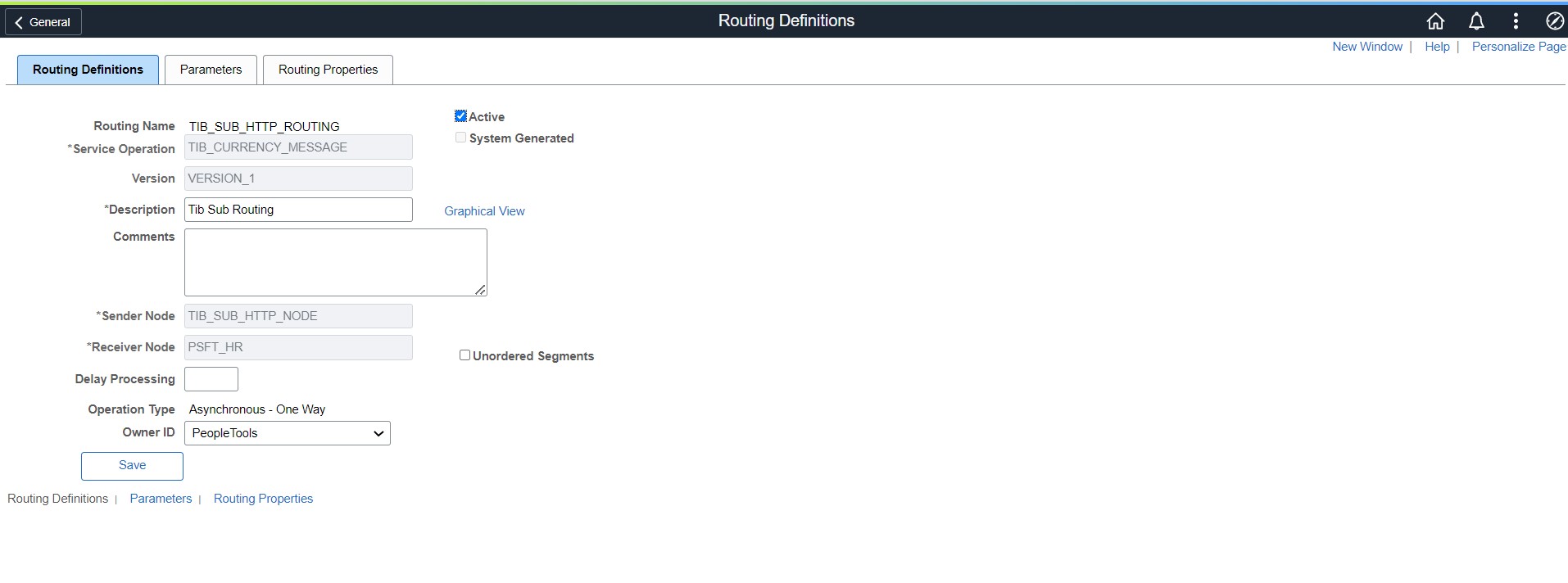Task I: Define Routings
Routing definitions determine the sender and receiver of an integration. With routing definitions, you can specify inbound and outbound transformations that enable you to transform data structures into those that the sending or receiving systems can understand.
With Integration Broker, you can define and customize routings. The steps to define a routing are the same for all IB activities. However, based on the IB activity to be used, you need to select the appropriate sender node and receiver node.
To define a routing, complete the following steps:
-
Go to PeopleTools > Integration Broker > Integration Setup > Routing Definitions.
-
Search the existing routings. If no routing satisfies your search criteria, click the Add A New Value link.
-
Enter Routing Name and click Add.
-
Click the Routing Definitions tab and define the routing:
-
Specify Service Operation or click the button to look up the service you defined in Task H, Define Service Operations.
-
Enter Version.
-
Enter Description.
-
Specify Sender Node or click the button to look up the node you defined in Task D, Define Nodes.
-
Specify Receiver Node or click the button to look up the node you defined in Task D, Define Nodes.
-
Select
PeopleToolsfrom the Object Owner ID dropdown.Example:

-
-
Click the Connector Properties tab and fill in the information:
-
Specify Gateway ID or click the button to look up the gateway you defined in Task A, Configure Gateway URL and Activate Domain.
-
Specify Connector ID or click the button to look up the connector you defined in Task B, Load Gateway Connectors.
-
-
Click Save. The specified routing is created.